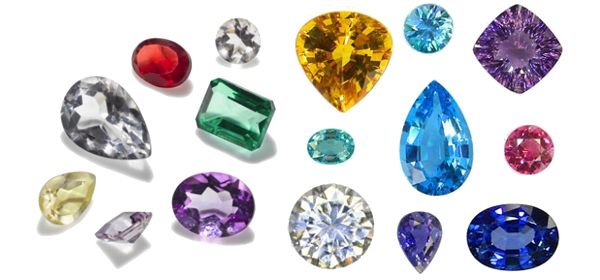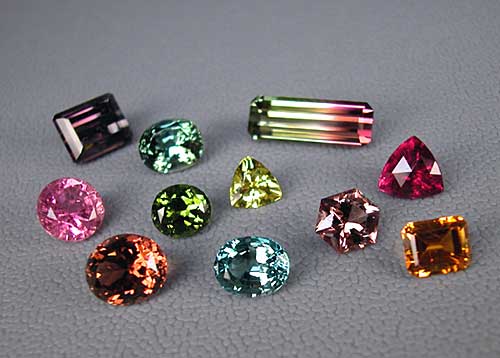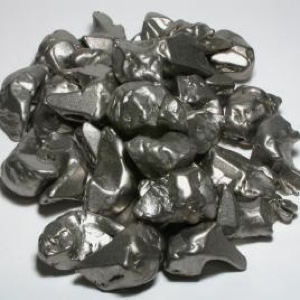The following are diamond shapes: marquise, oval, heart, pear, asscher, emerald, princess, cushion, trillion, radiant, baguette, old miner, european and fancy.
There are many different considerations for you to take into account when you look into diamonds, and one of the most important of these considerations is the diamond’s shape. Many people overlook this factor, instead placing their focus entirely on the 4 Cs of cut, clarity, color and carat. While it is extremely important to consider the 4 Cs, the actual shape of the diamond itself is going to contribute immensely as to whether or not you enjoy your diamond.
Shape itself is often mistaken for cut, or seen as interchangeable with cut; be aware that this is not the case. When speaking of a diamond’s shape it is not in reference to the cut, just as the diamond’s cut is not its shape. The shape of a diamond may be the result of the cut, but it is not the same thing as cut. A diamond cutter must cut and polish the rough diamond in order to give it its shape. In other words, shape refers to the actual geometric form and structure that the diamond cutter has cut and polished.
For many people, when they think of diamonds they either equate diamonds with the common round shape, or they do not consider shape at all. This does not prove to be much of a problem for most people as far as actually purchasing a diamond goes, as most people choose the typical round diamond. However, when looking into acquiring a diamond, following the approach of looking only at round diamonds, or not taking shape into account at all, will not only cause you to possibly miss finding the perfect diamond to match your individual tastes, but it also eliminates a world of diamond shape possibilities.
The round brilliant diamond can be a wonderful diamond choice for just about anyone, but it is far from the only choice in diamonds. Just as there are many different diamond cuts, colors and carat weights, there is also a world of different diamond shapes. Amongst these myriad diamond shapes are the Marquise, Oval, Pear, Heart, Asscher, Emerald, Princess, Cushion, Trillion, Radiant, Baguette, Old Miner, and European. Today, many of the Fancy shapes are approaching the light display of the round brilliants, and more people are discovering the unique character and distinctiveness that can be found in each of these Fancy shapes.
Perhaps one of the most important reasons for the development of different diamond shapes is due to financial reasons. When diamonds are found, in order for them to become the shining, scintillating objects of desire that we have come to know them as, they must be cut and polished. During the cutting and polishing process, much of the rough diamond’s carat weight is lost, therefore various shapes were created to minimize this loss.
There are many more diamond shapes than could be reasonably listed, and there are a number of good reasons for this. The history of the diamond for use as a gemstone is long and rich, and this means that there has been a long time for diamond cutting to develop. Throughout this long history, diamond cutters around the world have developed various techniques for shaping diamonds. In addition to the individual diamond cutters desires for unique shapes, there have also been many people, such as France’s King Louis the XIV, who have commissioned new diamond shapes to meet their own desires.
Some diamonds, such as the round ideal cut diamond, are intensely wasteful of the rough diamond. This is one important reason why purchasing a Fancy shape over a round can be a good budget saving decision. Over the centuries, as diamond cutters would sit down to cut and polish rough diamonds, they discovered and developed shapes that can best utilize the greatest quantity of the diamond’s carat weight. For example, if a cutter is looking at a rough diamond and sees that by squaring the diamond, rather than rounding it, he could get a much larger diamond out of the rough, it will often make financial sense to choose the square shape.
Another reason for the development of different diamond shapes comes out of the advancement of technology. As the techniques of diamond cutters developed, so too did the tools that they used in their diamond cutting. The greater the technology became, the more it allowed diamond cutters to use not simply their imagination to come up with new shapes, but it allowed them to develop diamond shapes based on research into the study of light and its effects on and within diamonds.
The most famous of these studies has to be Marcel Tolkowsky’s 1919 published paper on light and its reflection and refraction on and within the diamond. In this study, Tolkowsky found that the round shape of diamond was the ideal shape for creating the greatest display of light. The study helped to create the ideal cut diamond, which was developed out of the round brilliant shape, using specific mathematical measurements for the size and placement of facets, table size, and crown and pavilion depth. This study marked the beginning of the round brilliant shape as the most popular of diamond shapes.
The discovery of the round brilliant as the ideal shape for use in the ideal cut diamond is one of the main causes for it being set apart from, and so more expensive than, the other diamond shapes, known collectively as Fancy shapes. Whereas the Fancy shapes of that time had been shaped for the low-level light effect of gas and lamp light, the new brilliant round was faceted with the use of the then-new electric lighting taken into account. Out of all the shapes being used at the beginning of the 20th century, the round brilliant diamond quickly became seen to be the diamond shape that produced the most brilliant and scintillating light display under this new type of much brighter lighting.
Why Choose Different Diamond Shapes
When looking for a diamond it is important to be familiar with the diamond shapes that are available. One of the most obvious reasons is personal choice and taste. While it is true that personal taste is quite important in choosing your diamond or diamonds, there are extremely practical reasons as well. A short list of these to consider include hand size and the actual use of the ring.
Remember, when all is said and done, the diamond you are buying is going to be worn on someone’s hand. Oftentimes, people do not look into the effect that a diamond’s shape is going to have on the hand that will be wearing it. This can be an enormous mistake, as different shapes can have markedly different effects on a given hand. For example, a round diamond tends to have a foreshortening effect on hands. If the hand wearing the diamond has short fingers, this will be accented when wearing a round shaped diamond. A rectangular shaped diamond will produce the opposite effect, causing fingers to appear longer. Think of it this way, would you spend money on an item of expensive dress clothing without first finding the size and cut of dress or suit that was right for you? Would you buy it without trying it on first? Diamonds and diamond rings are no different.
A second important consideration that you should keep in mind is the issue of the actual use of your diamond ring. What this means is that you should be as cognizant as possible of the situations in which the ring will be worn. Will it be daily? Will it be worn to work? Will the wearer regularly wear clothing that could easily snag on certain diamond shapes? For example, if you work with your hands, you might want to consider diamond shapes and settings that do not have points or sit high on the hand, as these could be more easily damaged than by shapes and settings that sit more flush to your hand. By putting some thought into these questions you could avoid a diamond shape that would not fare well under certain circumstances, and so cause you to be displeased with your ring.
An Important Note on Step Cuts
It is important to be aware that if you are thinking of choosing a step cut shaped diamond that you should look into a diamond with high clarity, VS2 or higher. The reason for this is found in the actual cut of step cut shapes, such as the emerald cut. The step cuts are not cut for the same effect as the round brilliants. While round brilliants have 58 facets in order to bring out the maximum of scintillation and light dispersion, step cuts have fewer facets, with each of them cut into wide, window-like mirrored panes. Due to the longer larger facets step cuts tend to be cut for greater carat weight.
These long, window pane facets are not capable of producing the fire and brilliance of brilliant stones but they allow for a wonderful luster. The many facets of the brilliants, and the resultant brilliance itself, allow for a lower clarity in the diamond, as many of the clarity flaws can be muted, or “hidden,” within the cut. The long planes of the step cut facets do not allow for this. Flaws become far more apparent in lower clarity step cuts than in brilliant stones of the same clarity level. By simply choosing a higher clarity for a step cut, you will have a diamond that will have a luster and warmth that will delight.











